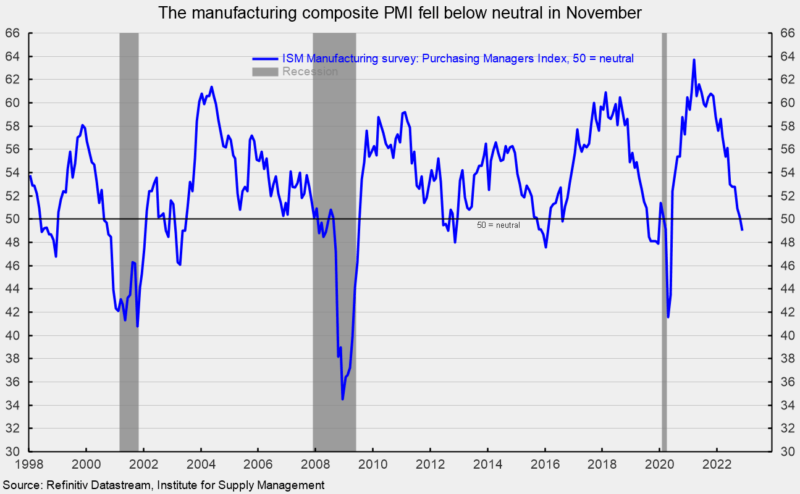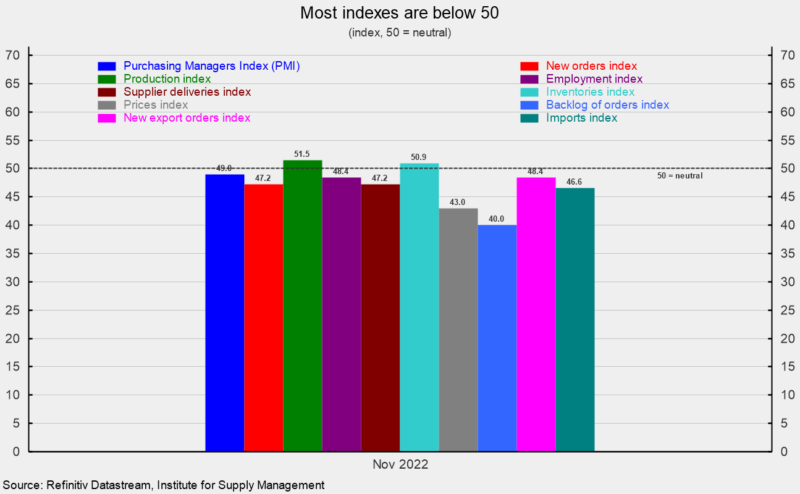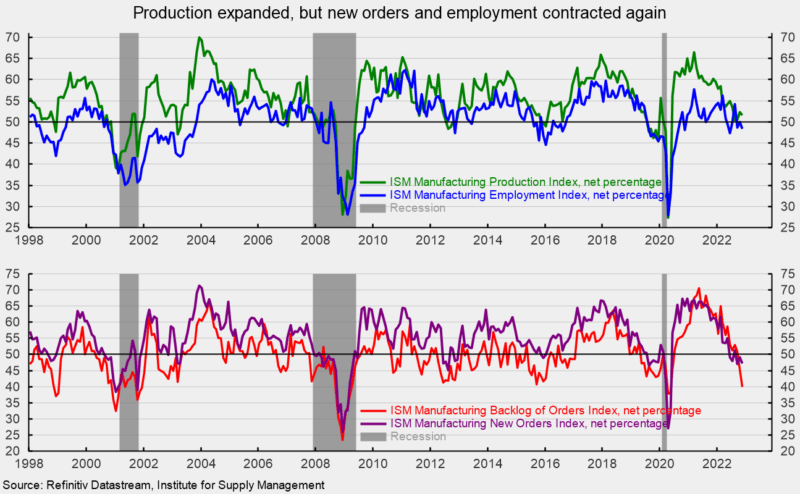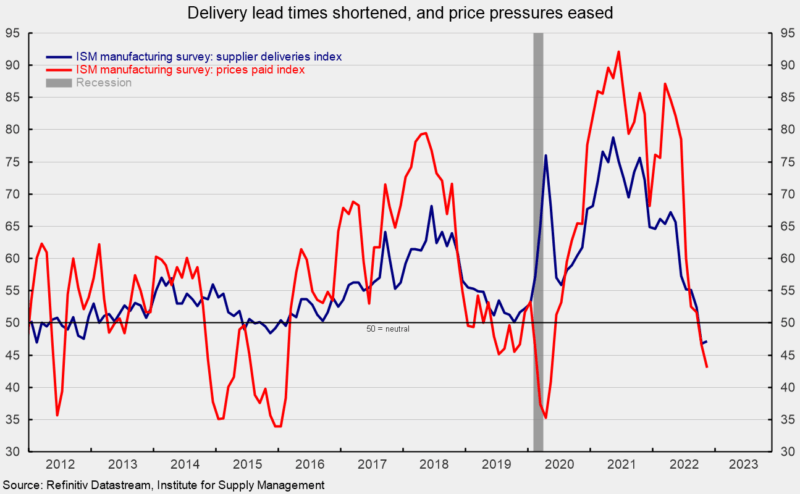Manufacturing-Sector Contracts in November
The Institute for Supply Management’s Manufacturing Purchasing Managers’ Index fell to 49.0 percent in November, the first reading below neutral and lowest level since May 2020. The survey suggests the manufacturing sector contracted in November (see the first chart).
Nearly every component index was below neutral for the month (see second chart). According to the report, “The U.S. manufacturing sector dipped into contraction, with the Manufacturing PMI at its lowest level since the coronavirus pandemic recovery began. With Business Survey Committee panelists reporting softening new order rates over the previous six months, the November composite index reading reflects companies’ preparing for future lower output.”
The Production Index fell but remained above neutral, suggesting weak growth for the month. The index came in at 51.5 percent in November, falling 0.8 points from October (see the top of the third chart). The index has been above 50 for 30 months but remains below its 25-year average of 55.4 percent.
The Employment Index fell to 48.4 percent, declining 1.6 points. The November result was the fifth time in the last seven months that the index was below neutral, averaging 49.7 over that span (see the top of the third chart). The report states, “Labor management sentiment continued to shift, with a number of panelists’ companies reducing employment levels through hiring freezes, attrition, and now layoffs. In November, layoffs were mentioned in 14 percent of employment comments, up from 6 percent in October.” The report adds, “For those companies expanding their workforces, comments continue to support an improving hiring environment.”
The Bureau of Labor Statistics’ Employment Situation report for November is due out tomorrow, December 2, and expectations are for a gain of 200,000 nonfarm payroll jobs, including the addition of 20,000 jobs in manufacturing.
The new orders index fell by 2.0 points posting its third consecutive month and the fifth month in the last six below the neutral 50 mark. The index came in at 47.2 percent (see the bottom of the third chart). According to the report, “None of the six largest manufacturing sectors reported increased new orders.”
The new export orders index, a separate measure from new orders, rose in November but remained below neutral, registering 48.4 percent versus 46.5 percent in October. The latest reading is the fourth consecutive month below 50.
The Backlog-of-Orders Index came in at 40.0 percent versus 45.3 percent in October, a 5.3-point drop (see the bottom of the third chart). This measure has pulled back from the record-high 70.6 percent result in May 2021 and is now well below 50, suggesting contraction in backlogs.
Customer inventories in November are considered “about right”, with the index rising to 48.7 percent, very close to the neutral 50 level (index results below 50 indicate customers’ inventories are too low). According to the report, “The current index level is no longer providing positive support to future manufacturing expansion.”
The supplier deliveries index registered a 47.2 percent result in November, up 0.4 points from October but still below neutral. November was the second month below 50 and suggests shortening lead times for delivery of input materials (see fourth chart). The latest results were the first back-to-back results below 50 since 2015.
The index for prices for input materials sank again, dropping another 3.6 points to 43.0 in November (see fourth chart). The index is down from 87.1 percent in March 2022 and 92.1 percent in June 2021. The result suggests input prices may have declined for the second consecutive month in November.
The survey suggests the manufacturing sector has seen a clear slowdown in recent months with broad based weakness across different aspects of business. Economic risks remain elevated due to the impact of inflation, an aggressive Fed tightening cycle, continued fallout from the Russian invasion of Ukraine, and waves of new Covid-19 cases and lockdowns in China. The outlook remains highly uncertain. Caution is warranted.









